Dishes That Speak to You–in French
“TALKING PLATES!” I didn’t realize, years ago, that I was collecting something that had a name. Collecting–that’s a rather grand term for buying, hit or miss, the occasional dessert-size plate on eBay or at an antiques mall just because it had a funny joke written on it in French.
It’s only in recent times that I have discovered that this genre of crockery is, well, a genre, “Assiettes Parlantes.”
What the plates are talking about are professions, months of the year, jokes about tourists, the fables of La Fontaine–all manner of topics. I now see that these ironstone transferware dishes are called “fine,” but this is no porcelain from Limoges. “Fine” refers to the ability of the transfer process to replicate rather finely drawn images, whether it’s the King of Hearts wearing his trousers back to front (no kidding: That’s in the playing-card series, circa 1870: “Le bon Roi Dagobert / a mis sa culotte a l’envers”) or the series showing new recruits to the French army, for the Prussian War, judging by the uniforms (Teaching Theory in the Barracks: “Voyons, qu’est-ce que vous devez faire quand vous apercevez l’ennemi?” “Mon testament, mon Capitaine!” — “So, what do you have to do/make when you see the enemy?” “My last will and testament, my Captain!”).
The plays on words–jeux de mots–have a large role in this kind of sometimes sly humor. Some of the plates I’ve bought are rebuses, and even though the sellers were kind enough to translate them, clue by clue, on the back, the details elude me years later.
As “fine” as the ironstone plates are said to be, they have always struck me as rather crude, addressing a mass audience, and indeed the French Wikipedia tells me that in the 19th century the transfer process allowed a worker to produce between 200 and 250 plates in a day, so not a rare commodity.
The potteries that made commemorative dishes date from the early 19th century and were in full swing by the 1860s. In the late 19th century, the Hautin-Boulenger et Cie. pottery at Choisy-le-Roi won the commission to create the enameled signs seen to this day in the Paris Metro. A major strike in 1936 brought about the end to Choisy-le-Roi; production at Montereau continued all the way up to 1955. The Paris showroom built by Hautin-Boulenger, 18 rue de Paradis, its facade a marvel of enameled ceramic, is today a national landmark.
Some of the early black-and-white images from the pottery at Creil or Montereau, commemorating Napoleonic victories or national monuments, have an elegance about them. And in fairness to all of the potteries, a lot of their production was handsome decorative dinnerware. But the funnier examples, of which I have many from the potteries at Choisy-le-Roi, Digoin and Sarreguemines, are pure kitsch, perhaps the ceramic equivalent of Flintstones drinking glasses that once held jelly?
Whatever. If you’ve never heard of them, you will no doubt now see them everywhere, in antiques shops, on eBay, everywhere. Go ahead and indulge. I’m no competition: I stopped “collecting” when I ran out of storage space.
–Nancy McKeon
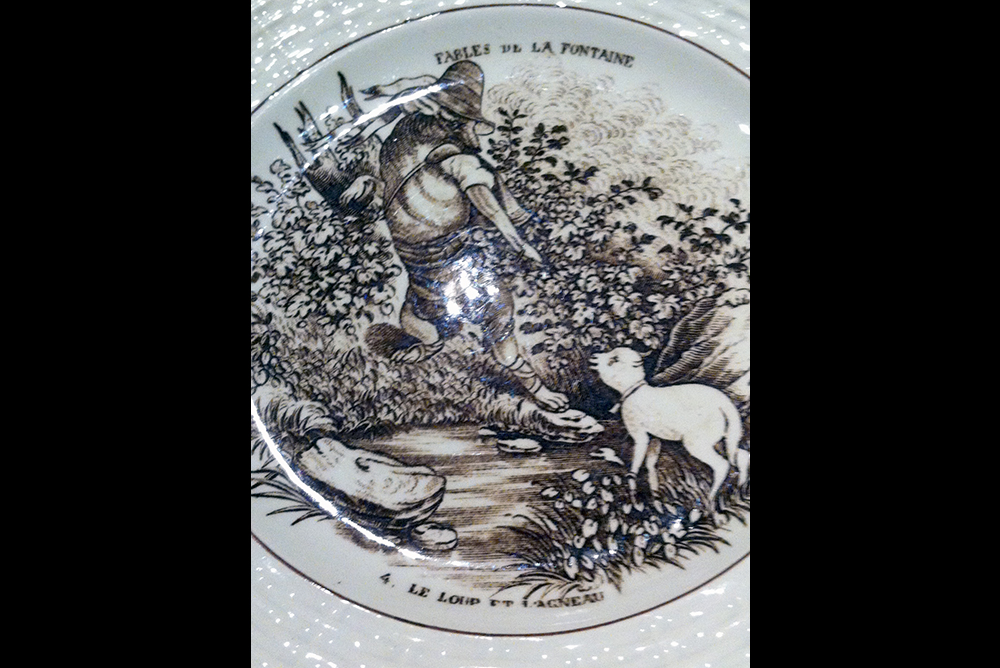
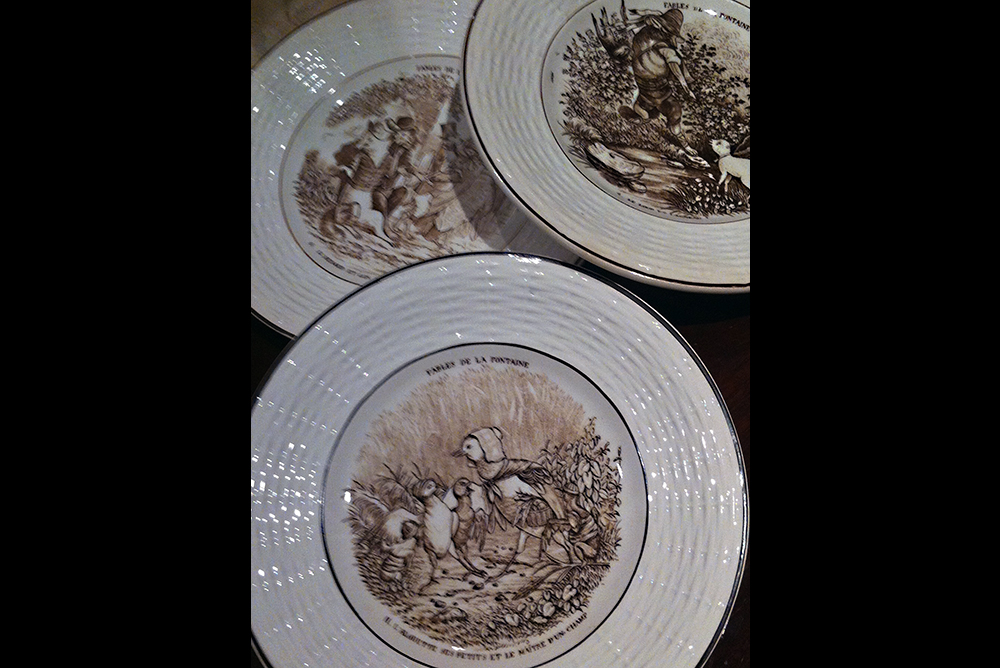
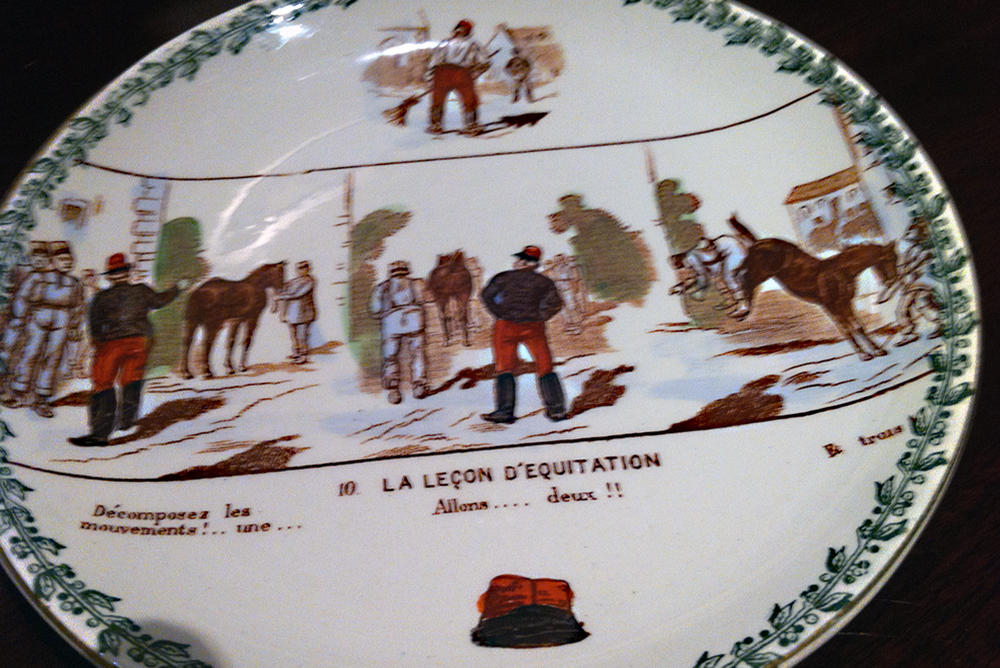
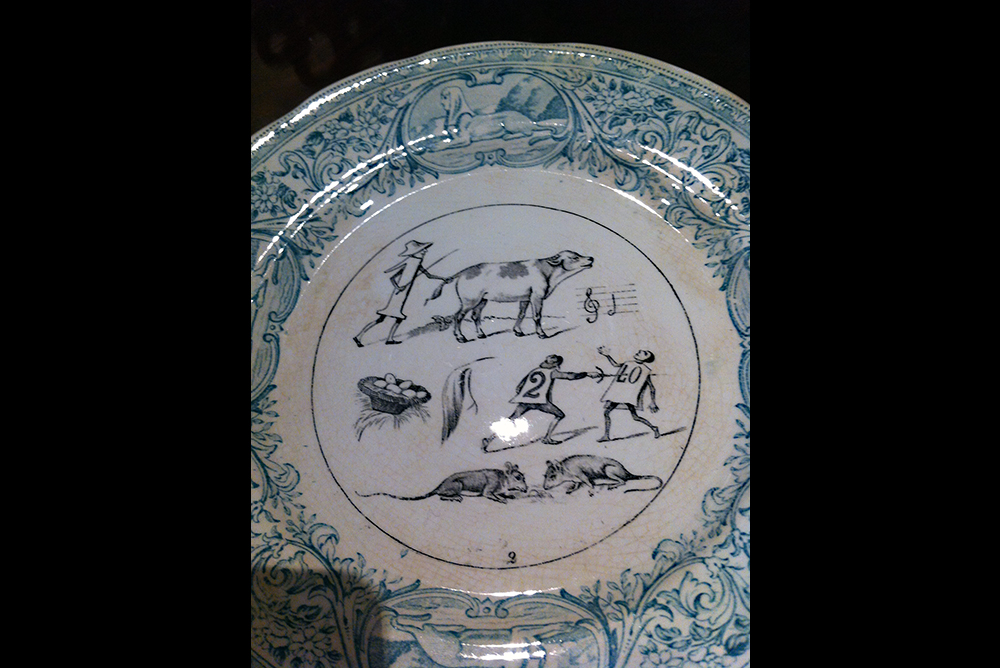
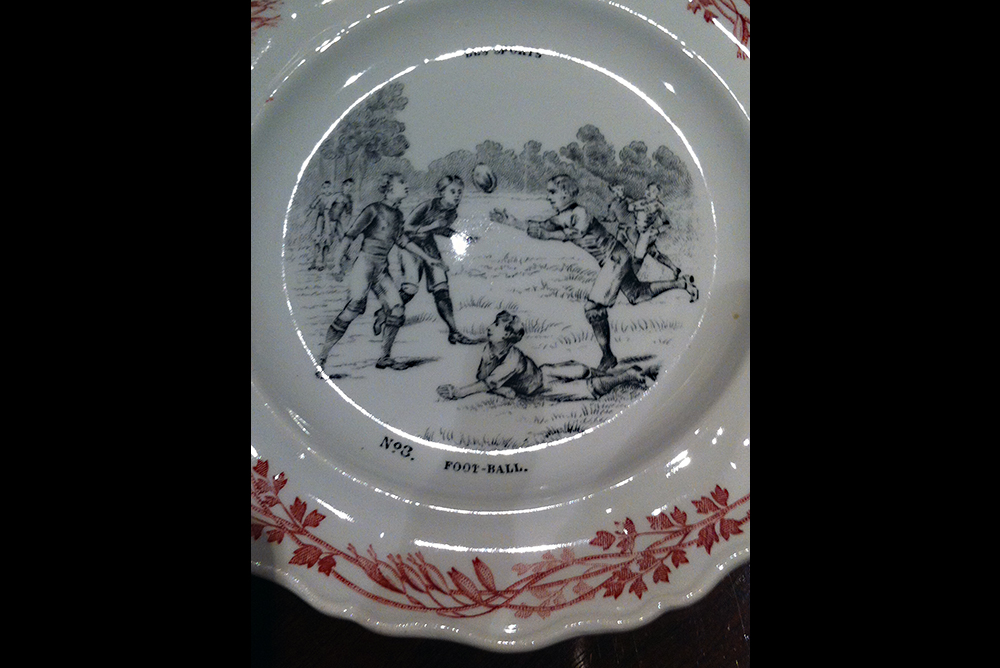

I just KNEW that you were the writer of this article! I was delighted to dine on one of these charming little plates, and kept moving my food around to spy the wonderful images!